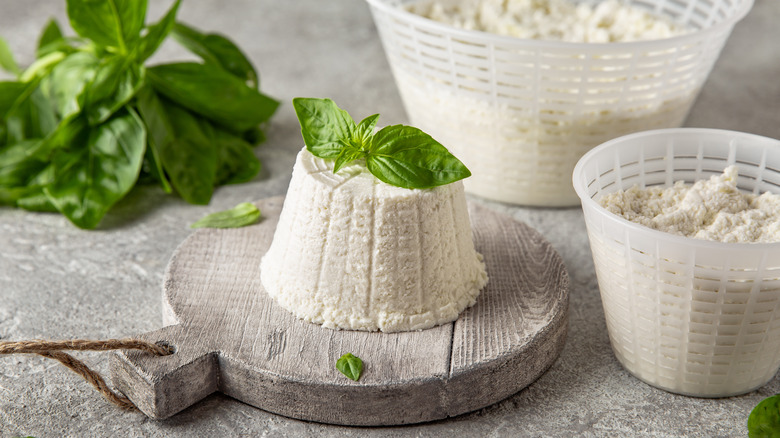The Unexpected Ingredient That Will Take Your Creamy Soups Up A Notch
Certain types of weather bring a universal hankering for soup, arguably one of the world's most comforting foods. Something about its healthy and warm configuration serves as the perfect antithesis to the chilled weather brewing outside. From colorful picks like orange-hued pumpkin stews to iconic, hearty tomato-based mixtures, soup season recipes are packed full of colorful vegetables and healthy, hydrating broths.
Another bonus? By and large, soups are also super easy to prepare — with most recipes calling for little more than a pot, a few fridge-ready ingredients, and a spoon to stir it all together. "Beginning a meal with a soup or salad, both high water volume, low-calorie foods, will fill you up and prevent overeating at meals," nutritionist Luara Burak told Eat This, Not That! And that's just a taste, as there's a whole lot more to love about those hearty bowls.
While it's hard to mess up throwing some of your favorite veggies into a pot with your broth of choice, there are a few simple ways you can take the fall dish up a notch. If you're in the market for a new take on your favorite creamy and luxurious soup, just one fresh addition can easily upgrade that rich bowl of goodness from a lazy day comfort to a dinner party staple.
A few reasons to eat more soup
Not only are soups a great choice for a meal that's both fast and filling, but they're also nutritious. According to a 2013 study conducted at Iowa State University which looked at the diets of 10,500 different Americans, researchers found that those who ate more soup tended to have more beneficial diets, at least compared to those that didn't (via Eating Well). Respondents who ate soup tended to have more essential vitamins like iron, fiber, and potassium in their bodies. In addition to vitamins, soups are also an easy way to pack in extra fluids to keep hydrated during drying winters.
Well, make sure to read the labels on those canned soups in your pantry, as those are typically higher in sodium and fat compared to those you might make in-house (via Eat This, Not That!). According to Eating Well, however, don't write it off completely just yet. Even canned soups are usually nutritious. The often high levels of potassium in them may offset higher sodium levels, as potassium may help lowers higher levels of blood pressure that sodium and surprisingly salty foods could contribute to.
Nevertheless, not all soups are made equal, so it's best to take everything you hear about them with a grain of salt. Discover information for yourself based on what you're consuming. And if you're looking for a fresh addition to those thicker, creamier varieties of soups, we have a hack for you.
The secret to an extra creamy and delicious soup
If you're looking to add lush textures to, say, your creamy potato soup recipe, or bring depth to broth-heavy bowls, look no further than ricotta cheese. Incorporating ricotta into your soup can make for unexpected richness and balance (via the Los Angeles Times). Falling somewhere between cottage cheese and feta, ricotta's simple lightness and creaminess enhance other flavors already present in stews. It's also a perfect substitute for thick heavy creams.
All this well-roundedness means the Italian cheese pairs well with not just soups, but most anything. The Los Angeles Times says that the ricotta falls into the whey cheese category and is made from the remnants of other cheeses. With its signature mild and tangy flavor, ricotta is an extremely versatile ingredient. It's perfect for anything from spreading onto toast, folding into a ricotta mac and cheese recipe, and slipping into your favorite soup. The next time you want to make your favorite dish you don't want to forget the cheese.


